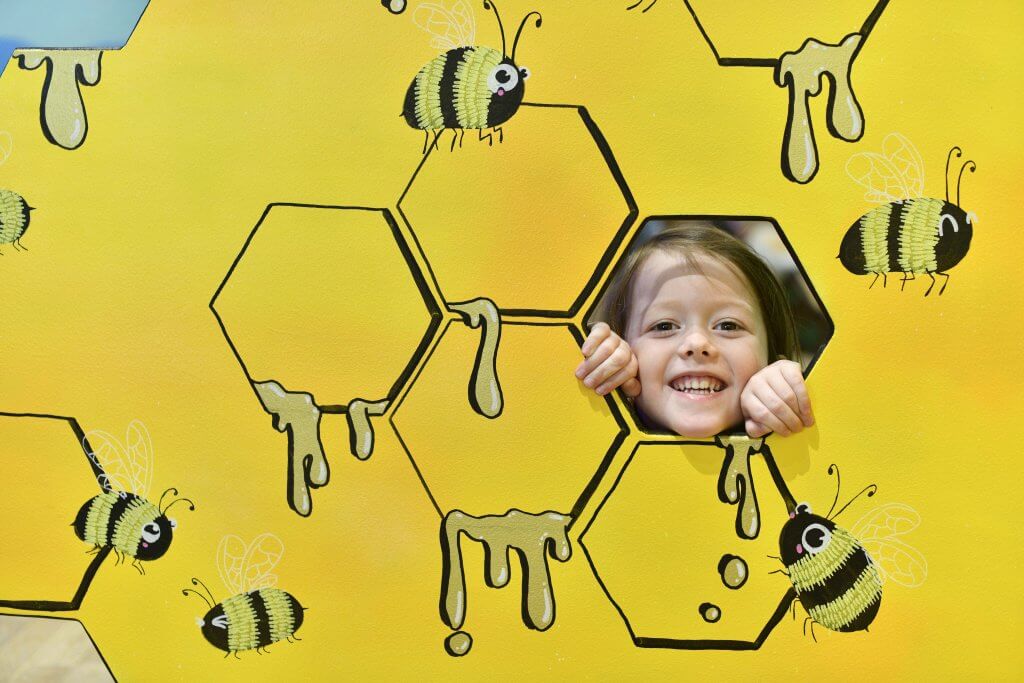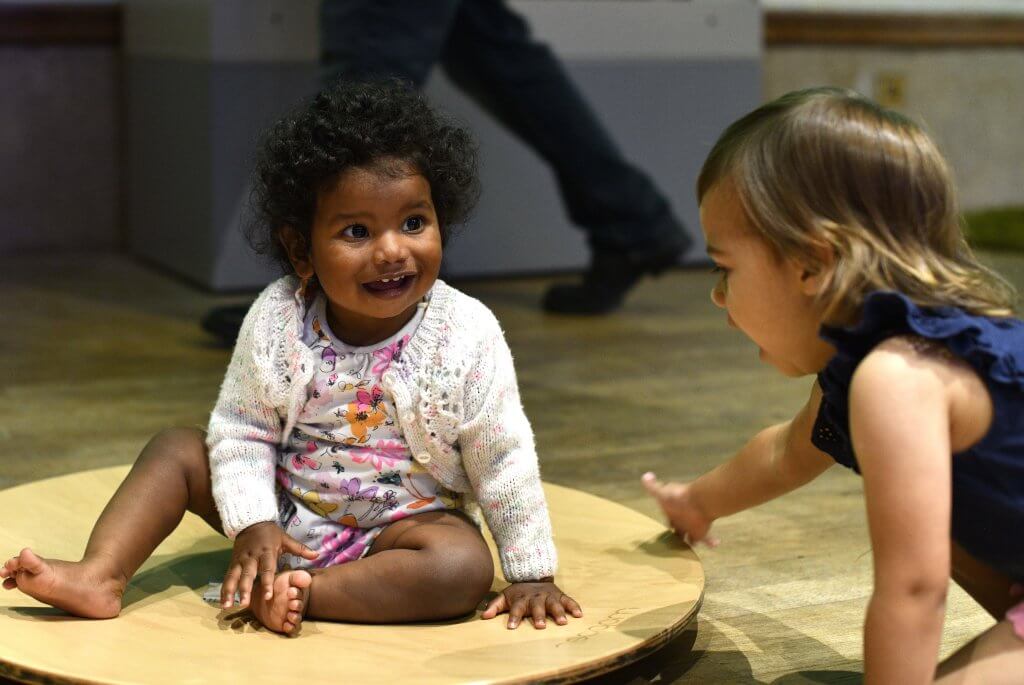Until my public engagement internship with Culture Coventry Trust, I had never really experienced or interacted with the ‘community’ that exists in Coventry.
Working across the Herbert Art Gallery, Coventry Transport Museum, and the Lunt Roman Fort, I noticed how these culture and heritage sites kept the warm sense of community alive. During my work, I spoke to children and parents who ended up becoming familiar faces. People who were once strangers who would walk past me on the street were now coming up to me just to say hello or wish me luck on finding a legal training contract. What started as small talk would turn into regular conversations and updates on people’s lives.
For many families, going to the Art Gallery was a bonding experience with all ages ranging from babies playing in the early years exhibition space to grandparents taking their grandchildren out for the day. In the increased cost of living nowadays, sites such as the Art Gallery and the Transport Museum being free to the general public/ Coventry residents has an underrated impact and the community makes use of it.
If I had to estimate my interactions across the locations, I’ve interacted with over 1000 children. Through story times, facilitating play spaces, leading arts and crafts sessions, setting up Mini Museum Engineers, singing with children and fighting to (fake) death in family battles, it has truly been an engaging and wonderful experience!
Herbert Art Gallery – Wonder on Walls Exhibition
There are only a few sentences that will instantly put a look of terror on the parents’ faces whilst simultaneously exciting the kids. It goes like this: “By the way, they’re allowed to draw on the walls”.
As families and young children step into the early years exhibition at the Herbert Art Gallery, they‘re met with an instant relaxing atmosphere as calming notes play in the background. Wonder on the Walls is an exhibition focused on nature and wildlife which is reflected by the three pods stationed around the room. A wildlife pod, a marine pod, and a nest pod, all very comfy and equipped with sensory resources that relate to each environment. Every time I find the fish in the wildlife pod, I gently remind the kids that Mr Fish needs to be in the sea to breathe. There are also a few kids who are prone to kidnapping the eggs from the nest pod but after reminding them that Mother Bird would be devastated, the eggs go straight back into the nest.

First week
During the first week of the exhibition, many families and young children stumbled across the exhibition by accident. Some had turned up to the gallery looking for arts and craft activities, some had simply gone for a browse across the gallery and came across an open studio playing music. There was an ongoing overlap of “Thank you’s” and compliments at this “amazing sensory area especially for younger children”.
Worried adults who initially lingered at the door sighed a breath of relief when I happily told them it was a free exhibition. When I mentioned it was open every single day for the summer, many jokingly told me I’d be seeing them every day. And after the first week, I did see many of them again. Familiar faces began pouring into the studio. Kids began to recognise me from the previous time which meant I had to keep presenting creative new ideas at story time.
Story time
My first story time was nerve wracking. Of course, no one else knew this but as I gathered my materials and book, there was a group of expecting children and parents all waiting to be entertained. And it was the children who I was eager to impress the most.
But what I’ve learned after years of working with children is that you leave your embarrassment at the door. No one cares how silly you may feel jumping up or down or roaring or tiptoeing in a circle, children can sense how in character you are.
So, as I read my book, I transform into the Big Bear and as I stretch and deepen my voice, I see the twinkle in their eyes as they also get immersed in the wonderful world of storytelling.
By the end of the story, I always ask a question. The first time I asked, ‘How many of you would end up being friends with Mr Bear’. All but one raised their hands in excitement. The one was a small baby, so I won’t get my feelings hurt by that one. As I leave them with a moral quote of the day, they all slowly get up and either go back to the pods, continue to draw on the walls or leave the exhibition for the day.

Excitement
I have the privilege of facilitating the exhibition for the whole day, twice a week. It starts off the week on a Monday and it ends my week on a Friday. With the changing tasks and activities during my internship, the play exhibition is one of the constants. And it never fails to excite me watching the creativity and freedom come out of every person that steps inside, regardless of age.
Coventry Transport Museum – Mini Engineers
From the generation that has been coined the ‘iPad generation’, it is always interesting to witness first hand the mental transformation that young children go through when they turn up at ‘Mini Museum Engineers’. Every Wednesday over the summer, I have been facilitating the open space in Coventry Transport Museum where loose parts and resources are available across the room for young kids to explore and build to their heart’s desire.
Veterans and newcomers
There are two categories of children who show up every Wednesday. The first is the experienced veteran. They turn up, leading the way for their parents and they go straight to the car ramp or turn into mini engineers straight away.
The second category is the newcomer whose parent has woken them up and brought them to the museum. When these newcomers arrive, they look around and all they see is loose parts. There’s no ready-made toy or instant engagement and they seem unsure on where to start or sometimes what to do.
A young boy came in with his dad and after standing in the middle of loose parts for 2 minutes, I went over for some encouragement. I created a character out of foam sticks and spanners and the boy immediately created a motorbike fitted with a shower and a house. It only needed a bit of encouragement and this boy had outdone my creation in a matter of seconds. When it was time to go home, the boy was reluctant to leave, and the dad confessed to me that he honestly thought he would be bored in 5 minutes.

Imagination and innovation
Not every child needs me to go over, most newcomers turn up, take a glance at everyone creating something and they naturally take on the task. After spending an hour in the morning, frantically pushing carts of loose parts, and trying to place and create creative resources, these children turn up and end up doing my job better than me.
There is so much innovation and imagination contained in these children and there isn’t always the time and place for children to unleash that at school or at home. Yet, from what I’ve experienced during my time at Coventry Transport Museum is that the museum is a prominent establishment that provides these children with the space, time and resources to be creative.
Creativity and spontaneity
When I reflect back on my internship and the three locations that I have worked at, Transport Museum is probably the part of my internship that has challenged me the most.
Whilst I have undertaken many tasks and new experiences for the first time at the Gallery and the Lunt, I have no issue when it comes to taking the lead and organising.
However, at the Museum I wasn’t just following the instructions, it felt as if I was creating them. When you are so used to using your brain in a structured and analytical way, it can take a while to fully accomplish the creativity and spontaneity required.
I would turn up to the museum and it’d be a blank slate. An open space and an hour to transform it into the ‘Mini Engineers’ space and each week you want to make it a little bit different from the previous week.

Building something new
Unlike my accomplishments as a Law student which are mostly based on academics and merit, my personal achievements here were linked to creativity. After creating a character using a cone, a Pom Pom, and other resources, I stood back and felt a sense of pride as I took a picture of my creation.
Ten minutes later and my character was missing an arm and a leg, but that is the beauty of child’s play. They have the freedom of breaking an idea into pieces and building something entirely new which is a concept that I will be taking with me as I depart from the museum and continue my degree.
By Maria Sheriff